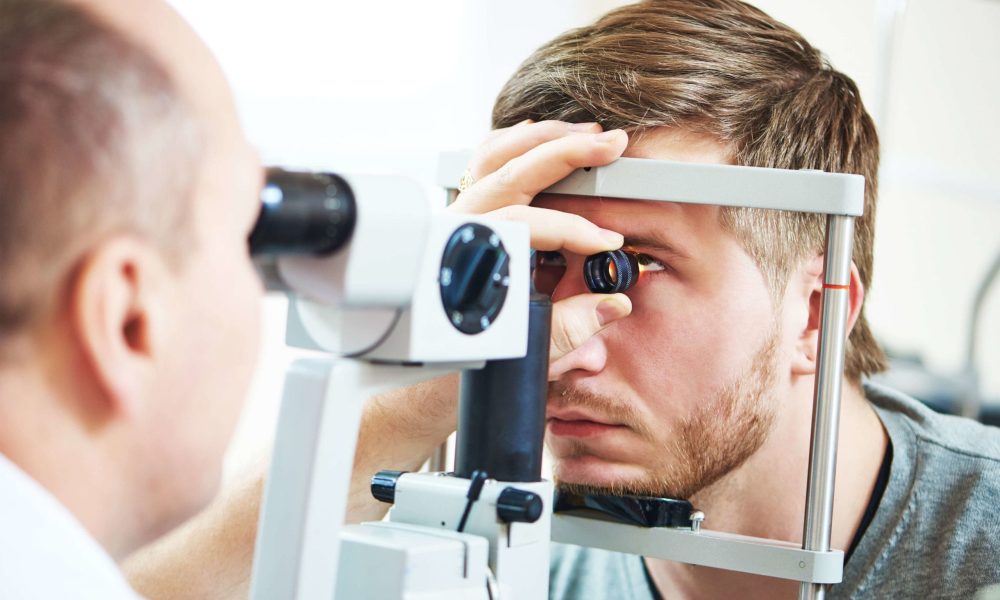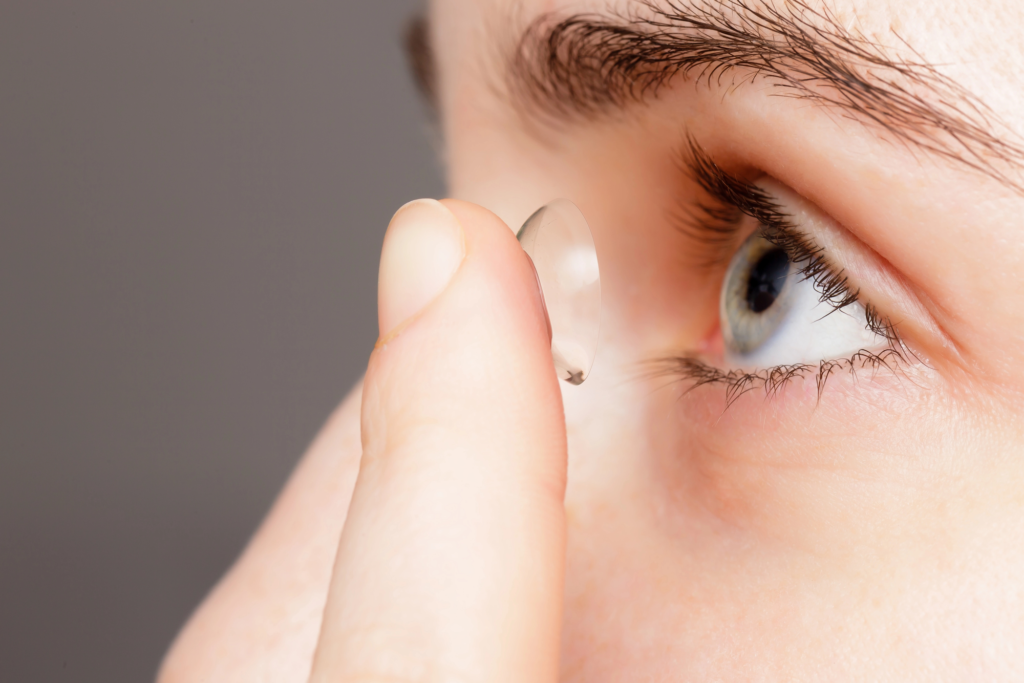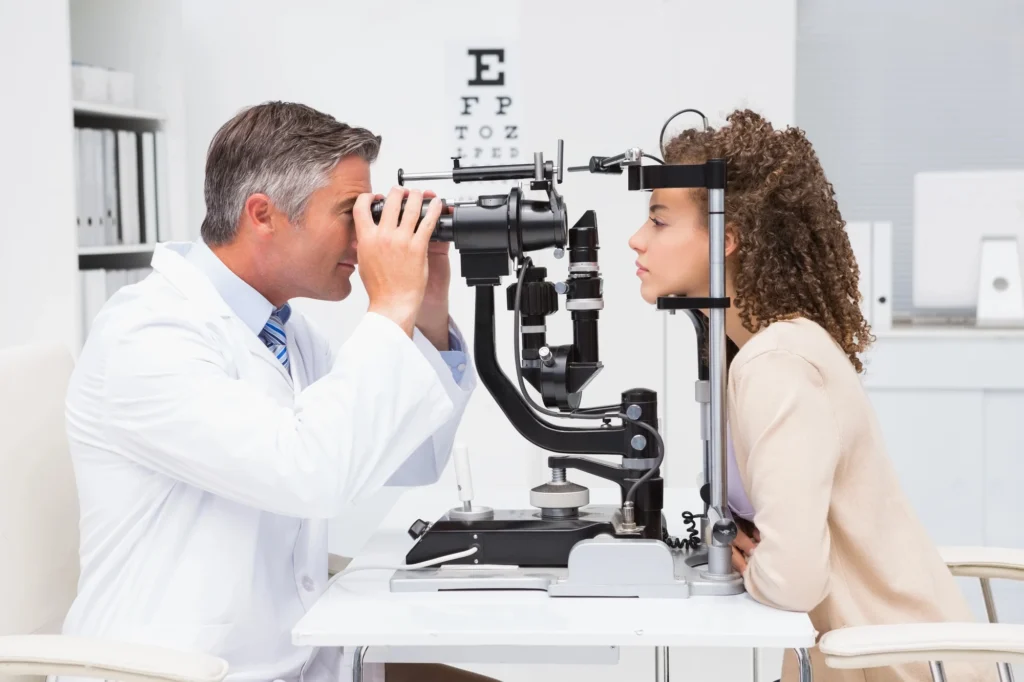Three million people in the United States have been diagnosed with glaucoma, and several million are over the age of 40.
Glaucoma is very common, but how do you know you have it? What is the glaucoma testing like?
In this article, we’ll explore glaucoma and what to expect when you think you need to see a doctor.
Types of Glaucoma
There are two primary types of glaucoma:
- Open-Angle Glaucoma: The most common type, open-angle glaucoma occurs when the eye’s drainage canals become clogged over time. This blockage increases intraocular pressure, gradually damaging the optic nerve. The drainage angle formed by the cornea and iris remains open, but the trabecular meshwork is partially blocked. This type of glaucoma develops slowly and often goes unnoticed until significant vision loss occurs.
- Angle-Closure Glaucoma: Less common but more severe, angle-closure glaucoma happens when the iris bulges forward, narrowing or blocking the drainage angle formed by the cornea and iris. This blockage leads to a sudden increase in intraocular pressure. Symptoms may include severe eye pain, nausea, redness in the eye, and blurred vision. Angle-closure glaucoma requires immediate medical attention.
Symptoms of Glaucoma
The symptoms of glaucoma vary depending on the type and severity of the condition:
- Open-Angle Glaucoma:
- Gradual loss of peripheral vision, usually in both eyes
- Tunnel vision in the advanced stages
- Angle-Closure Glaucoma:
- Severe eye pain
- Nausea and vomiting
- Sudden onset of visual disturbance, often in low light
- Blurred vision
- Halos around lights
- Reddening of the eye
Who Is at Risk for Glaucoma?
While anyone can develop glaucoma, certain factors increase the risk:
- Age: People over 60 are at higher risk.
- Ethnicity: African Americans, Hispanics, and Asians have a higher risk of developing glaucoma.
- Family History: A family history of glaucoma increases your risk.
- Medical Conditions: Diabetes, high blood pressure, and heart disease can increase your risk.
- Prolonged Use of Corticosteroid Medications: Long-term use of these medications can raise the risk of developing secondary glaucoma.
Glaucoma Tests and Procedures
Detecting glaucoma early is crucial to preventing vision loss. There are several tests and procedures that eye doctors use to diagnose glaucoma:
- Visual Field Test (Perimetry): This test maps out your peripheral vision, which is often affected first by glaucoma. During the test, you’ll look straight ahead and press a button whenever you see a light flash in your peripheral vision. This helps the doctor determine if you have any vision loss related to glaucoma.
- Ophthalmoscopy: This procedure involves examining the optic nerve for damage using a special magnifying device. Eye drops are used to dilate the pupils, allowing the doctor to get a clear view of the optic nerve.
- Tonometry (Pressure Test): A tonometer measures the pressure inside your eye (intraocular pressure). Higher-than-normal pressure is a significant risk factor for glaucoma. The test is quick and painless, often involving a puff of air or a gentle touch on the eye with a device.
- Gonioscopy: This test examines the angle where the iris meets the cornea. Eye drops are used to numb the eye, and a special contact lens with a mirror is placed on the eye to view the drainage angle and determine whether it is open or closed.
- Pachymetry: This test measures the thickness of your cornea using a small probe. Corneal thickness can affect eye pressure readings, making this test important for accurately diagnosing glaucoma.
FAQs About Glaucoma Testing
What test is done to check for glaucoma?
A comprehensive glaucoma exam includes several tests such as visual field testing (perimetry), ophthalmoscopy, tonometry (pressure test), gonioscopy, and pachymetry to assess different aspects of eye health.
What is the best eye test for glaucoma?
No single test can diagnose glaucoma. The best approach is a combination of tests, including tonometry to measure eye pressure, visual field tests to detect peripheral vision loss, and ophthalmoscopy to examine the optic nerve.
What is a normal glaucoma test?
A normal glaucoma test typically shows intraocular pressure within the range of 12-22 mm Hg, no damage to the optic nerve, and no significant loss of peripheral vision.
What is the best diagnostic tool for glaucoma?
The best diagnostic tool for glaucoma is a combination of visual field testing, which detects functional vision loss, and optic nerve examination through ophthalmoscopy or optical coherence tomography (OCT) to assess structural damage.
What is the most accurate test for glaucoma?
Optical Coherence Tomography (OCT) is considered one of the most accurate tests for detecting glaucoma. It provides detailed images of the optic nerve and retinal nerve fiber layer, helping to detect early changes.
How long does a glaucoma test take?
A complete glaucoma evaluation typically takes about 30-60 minutes, depending on the number of tests performed and the need for pupil dilation.
After Diagnosis: Treatment Options
Receiving a diagnosis of glaucoma can be challenging, but several treatment options are available to manage the condition:
- Medications: Eye drops are the most common treatment for glaucoma. They help reduce eye pressure by either decreasing the production of fluid within the eye or improving the outflow of fluid. It’s important to use these medications exactly as prescribed.
- Laser Therapy: Laser trabeculoplasty is a procedure that helps drain fluid from the eye, reducing pressure. This treatment is often used when medications alone are not sufficient.
- Surgery: If medications and laser therapy do not effectively control glaucoma, surgical options such as trabeculectomy or the insertion of drainage implants may be recommended to reduce intraocular pressure.
Glaucoma Testing: Don’t Ignore It
Catching glaucoma in its early stages is vital to receiving proper treatment. Once you start experiencing symptoms, it’s more challenging to treat. These glaucoma tests serve to help you make the best of your situation for as long as possible.
Are you looking for an optometrist to check for the onset of eye disease? See how our team of qualified professionals can assist you!





